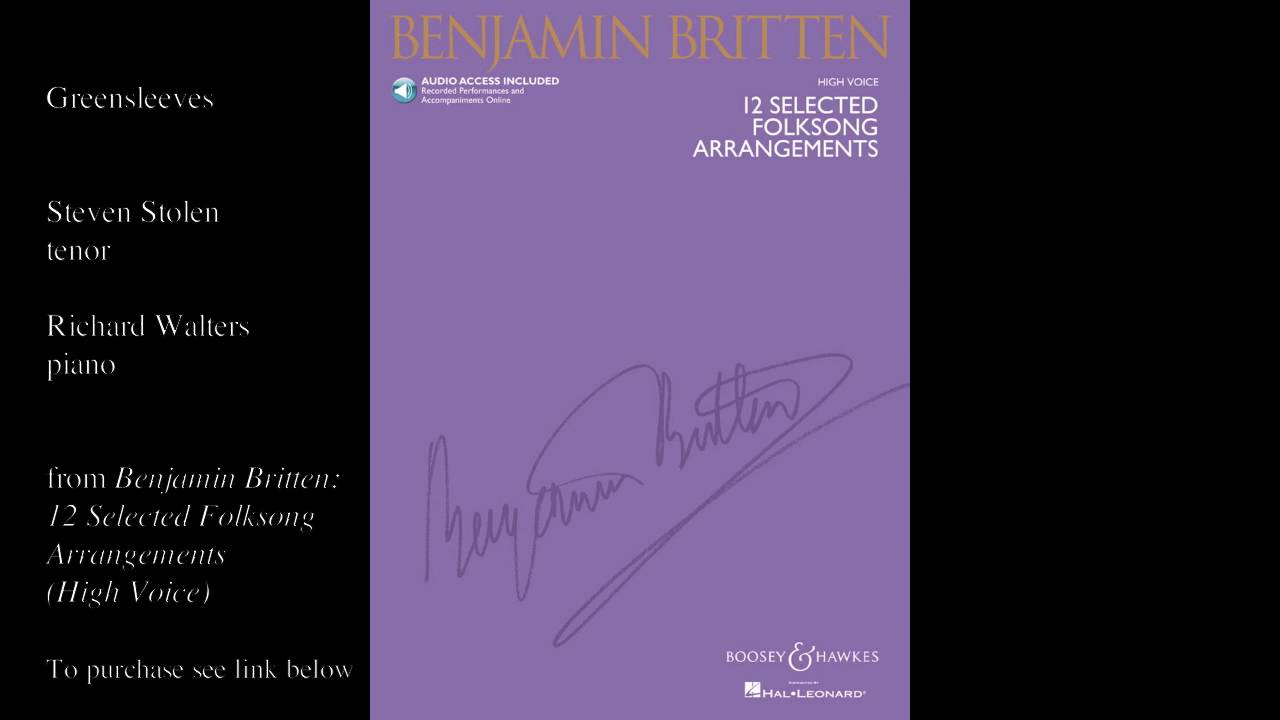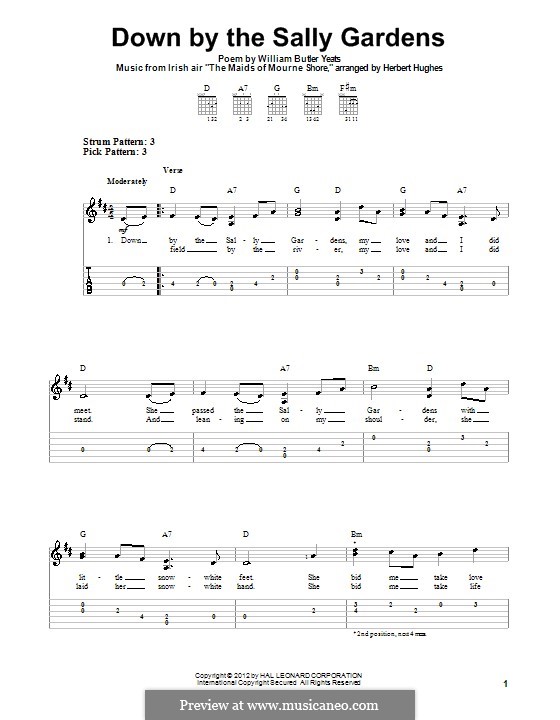

She passed the salley gardens with little snow-white feet. It is close in sound to the Irish word saileach, meaning willow.Ĭlick here for the video of “The Salley Gardens.” Down by the salley gardens my love and I did meet “Salley” or “sally” is a form of the Standard English word “sallow”, i.e., a tree of the genus Salix. The “Salley Gardens” may have been on the banks of the river at Ballysadare near Sligo. The tune Britten used for his 1943 setting was “The Moorlough Shore,” which Irish composer Herbert Hughes had also used for his classic 1909 setting of the Yeats poem. It was based on the words of an older folk song, to which Yeats added new words of his own. Down by the Salley Gardens ( Irish: Gort na Saileán) is a poem by William Butler Yeats, first published in 1889. Read on for a few clues to enhance your enjoyment!īackground.

Jonathan’s performance perfectly captures the intimacy of the song, and his vocalism recalls (and surpasses) the classic recording by Peter Pears. Mark’s in Glendale, CA, here is a video performance by tenor Jonathan Mack of “The Salley Gardens,” one of Britten’s most popular folk song settings. Posted in Repertoire Notes, Spacious Vision video and recordings Tagged "Hark the echoing air", Bianca Hall soprano, Britten Purcell settings, Spacious Vision Song Project Jonathan Mack performs “At the mid hour of night”įrom our 2013 “Britten in Song” concert at St. In Britten’s concert arrangement of this famous aria, the vocal parts and bass lines were preserved intact, while the orchestral accompaniment is re-imagined in a modern idiom.Ĭlick here to view Bianca Hall’s performance of “Hark, the echoing air,” from our recent “Britten in Song” concert in Glendale. Purcell composed “Dido and Aeneas,” the first opera we have in English, and many other works for the musical stage, including “The Fairy Queen.” Many sopranos (and a few tenors) have made its famous aria “Hark, the echoing air” a showpiece of their skills.īritten created his own performing editions of “The Fairy Queen,” “Dido and Aeneas,” and many other works of Purcell. Henry Purcell (1659-95) was to English music what Shakespeare was to English theater. He stopped only when the keeper came around with meat īegan to wonder, “Is life anything like that?”Ĭlick here for Gerald's performance of "The Cage." (Photo courtesy of Taso Papadakis) Posted in Repertoire Notes, Spacious Vision video and recordings Arnold Geis performs Richard Hundley’s “Isaac Greentree” James Thompson BixbyĪnd day by day and night by night, unconsciously,Ĭlick here for Gerald's performance of "Religion." Two of these songs–“Religion” and “The Cage”–are models of economy, brevity, and harmonic expressiveness.

There is a pronounced nostalgia in many Ives songs, and sometimes a humorous or ironic note. In more than 100 songs, Ives wove together original melodies, fragments of popular songs and hymns, and harmonies of sweet simplicity or crashing dissonance. Ives was one of the most original of twentieth century American composers. (Links to performance videos of two songs appear below.) For our recent AMERICAN PILGRIMAGE concert, tenor Gerald Seminatore and pianist Mark Salters offered songs by Charles Ives ( 1874-1954).


 0 kommentar(er)
0 kommentar(er)
